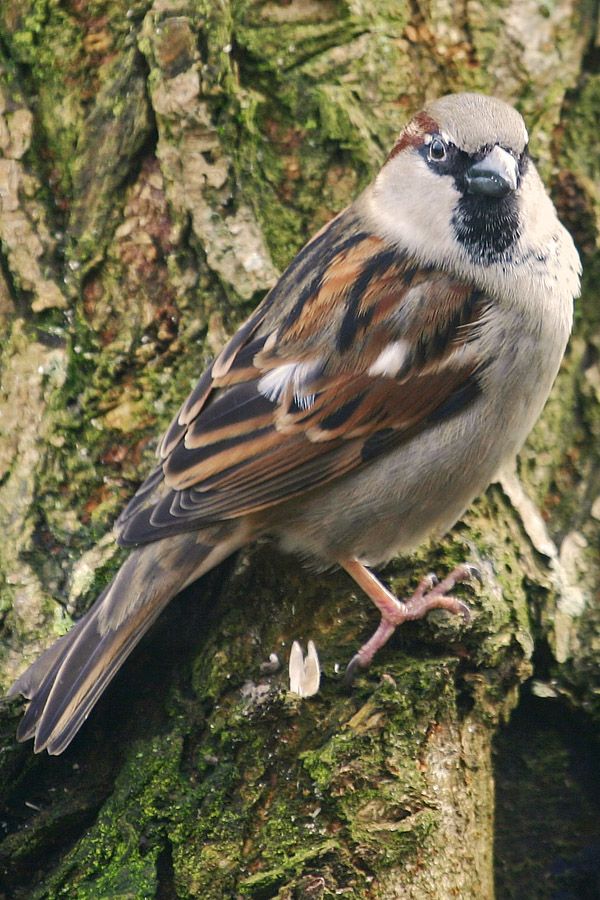
House Sparrow (Passer domesticus)
The House Sparrow (Passer domesticus) is a bird of the sparrow family Passeridae, found in most parts of the world. A small bird, it has a typical length of 16 cm (6.3 in) and a weight of 24–39.5 g (0.85–1.39 oz). Females and young birds are coloured pale brown and grey, and males have brighter black, white, and brown markings. One of about 25 species in the genus Passer, the House Sparrow is native to most of Europe, the Mediterranean region, and much of Asia. Its intentional or accidental introductions to many regions, including parts of Australia, Africa, and the Americas, make it the most widely distributed wild bird.
The House Sparrow is monogamous, and typically mates for life. Birds from pairs often engage in extra-pair copulations, so about 15% of House Sparrow fledglings are unrelated to their mother's mate. Male House Sparrows guard their mates carefully to avoid being cuckolded, and most extra-pair copulation occurs away from nest sites. Males may sometimes have multiple mates, and bigamy is mostly limited by aggression between females. Many birds do not find a nest and a mate, and instead may serve as helpers around the nest for mated pairs, a role which increases the chances of being chosen to replace a lost mate. Lost mates of both sexes can be replaced quickly during the breeding season. The formation of a pair and the bond between the two birds is tied to the holding of a nest site, though paired House Sparrows can recognise each other away from the nest.
Source: en.wikipedia.org/wiki/House_Sparrow - 08.02.2014
Born to Fly *
My Creator designed me first and foremost as a flier. For that reason, every last part of my body is designed for flight. (...) My body is made of the lightest material imaginable. Almost all my bones are hollow. This means they can take to the air. They are very light, but remain stable. A distant relative of mine, the albatross, has bones that have a combined weight of only 120 to 150 grams, even though he is a metre long, and has a wingspan of three metres. The weight of his feathers exceeds the weight of his bones!
If our bones were full of marrow, like those of the reptiles, we could never fly. Besides that, our pelvis is attached to our spine, which is not the case with reptiles. That’s the only way that our skeleton has the strength and elasticity that is essential for flying.
You know, my Creator gave me an exceptionally strong heart. It is one of the most efficient hearts there are. At the moment, while talking to you, it’s beating more than seven times a second, or 460 times a minute. Just now, when I was fleeing from the sparrowhawk, my pulse went up to 760! It has to beat that fast to enable me to fly.
A Remarkable Hole
The small hole in the linkage of my upper arm bone seems pretty remarkable to me. This is not a defect. The ligament which connects the breast muscle with the upper side of the shoulder joint goes through this hole. Without this, I wouldn’t be able to lift my wing, let alone fly. If I descended from reptiles, then I would have to ask myself, who drilled that hole in the glenoid cavity? And who threaded the ligament through the hole? You will look long and hard before you find a hole like that in a crocodile or in a dinosaur.
Be Strong, My Heart!
(...) You know, my Creator gave me an exceptionally strong heart. It is one of the most efficient hearts there are. At the moment, while talking to you, it’s beating more than seven times a second, or 460 times a minute. Just now, when I was fleeing from the sparrowhawk, my pulse went up to 760! It has to beat that fast to enable me to fly.
continued: About Breaking Length and Telescope
* quotes from the book "If Animals Could Talk"









